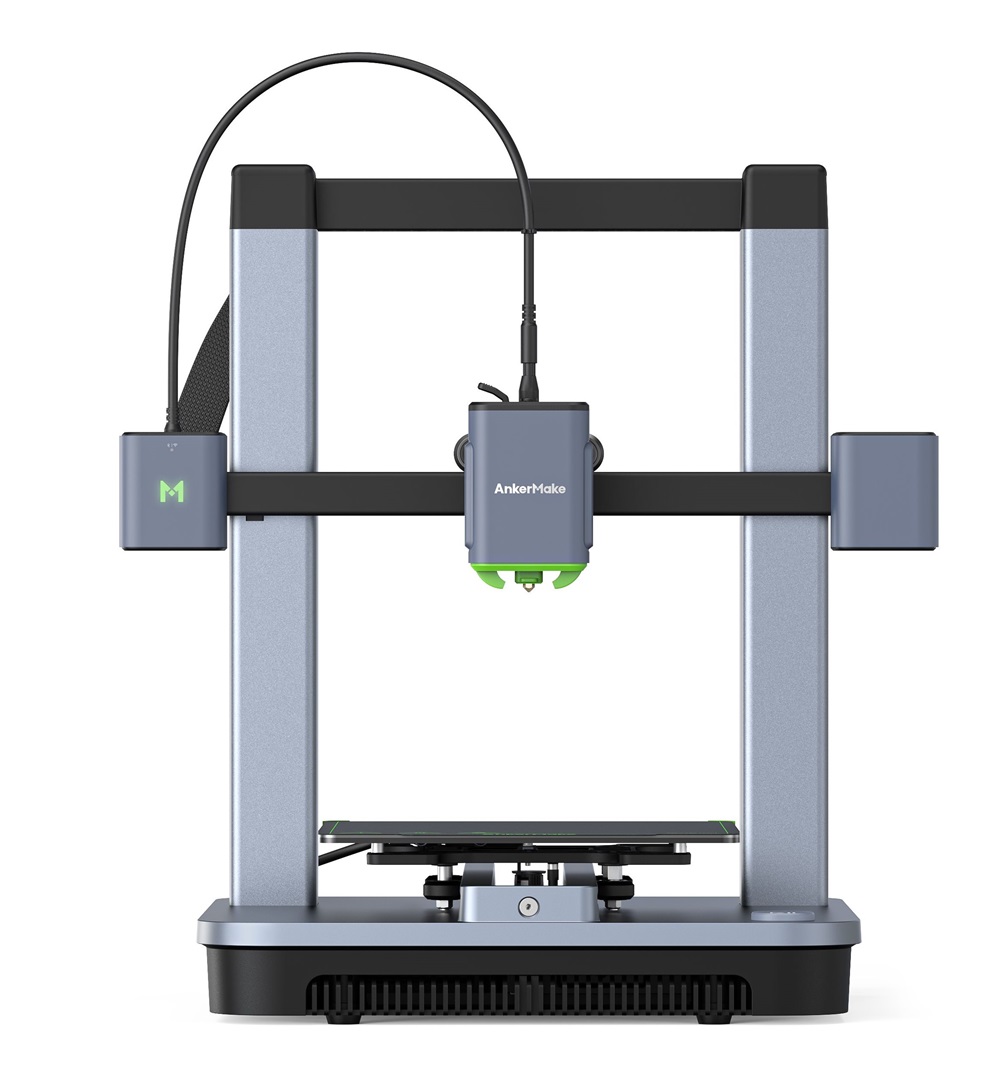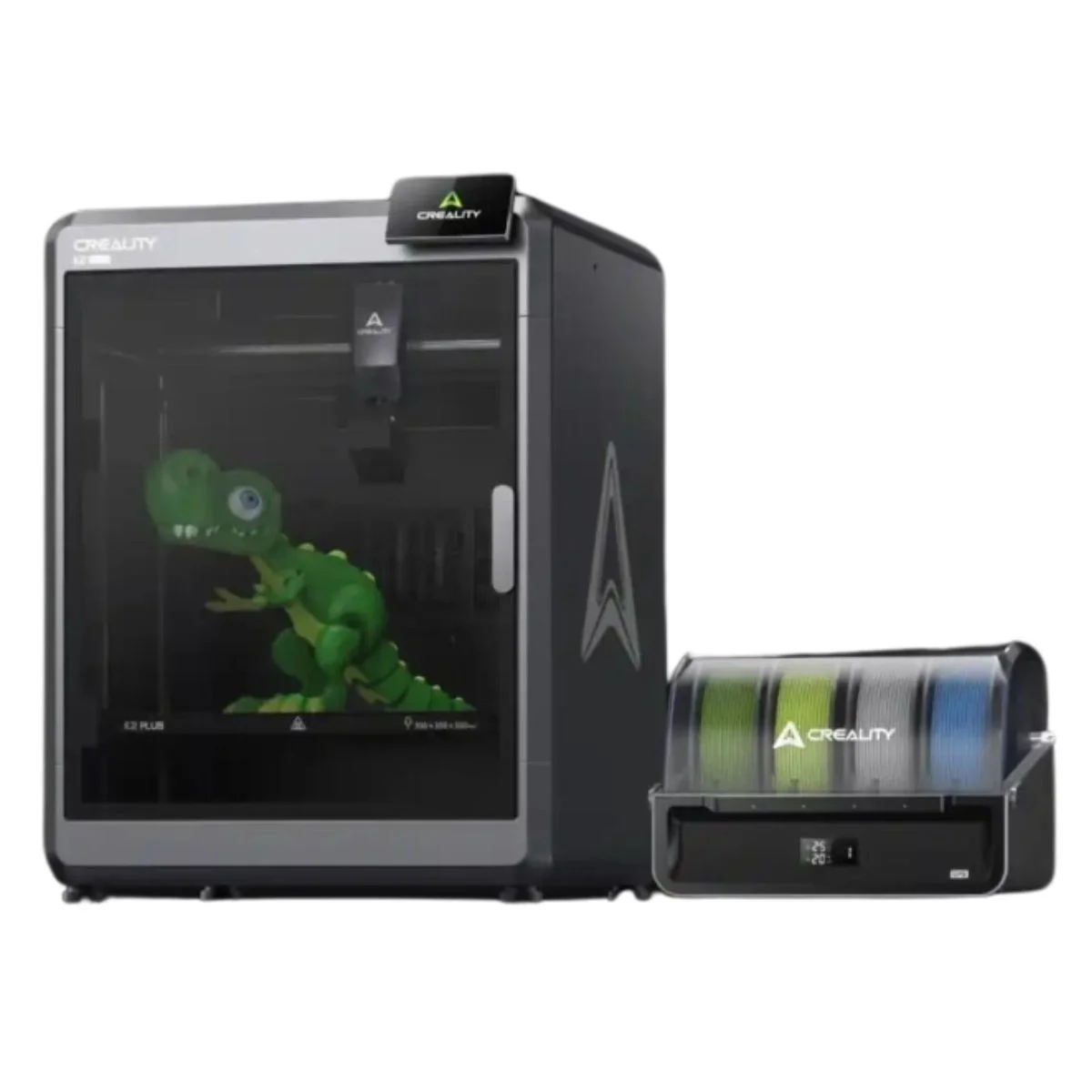Compare M5C vs K2 Plus
Comparison between the best 3D printers
Choose the best 3D printer at the best price. The cheapest 3D printers are here.
Buy a 3D printer here with 3D Fila.
 |
 |
|
| Model | M5C[BUY M5C] |
K2 Plus[BUY K2 Plus] |
| Printing Material | Filament | Filament |
| Buy Filament for AnkerMake M5C | Buy Filament forCreality K2 Plus | |
| Estimated price | $399,00 | $1500,00 |
| Manufacturer | AnkerMake | Creality |
| Release Year | 2023 | 2024 |
| Print Volume [mm] | 220x220x250 | 350x350x350 |
| Printer Size [mm] | 466x374x480 | 495x515x640 |
| Weight [kg] | 9,6 | 33,5 |
| Power Loss Recovery | YES | YES |
| Enclosed printer | NO | YES |
| Bed Leveling | Automatic | Automatic |
| Filament End Sensor | YES | YES |
| Bed type | Heated | Heated |
| Power supply system | Direct Drive | Direct Drive |
| Standard nozzle | 0,4 | 0,4 |
| Maximum Nozzle Temperature [°C] | 300 | 350 |
| Maximum Bed Temperature [°C] | 100 | 120 |
| Maximum printing speed [mm/s] | 500 | 600 |
| Filament holder | YES | YES |
| Camera for supervision | NO | NO |
| Recommended filaments | PLA, PETG, TPU, ABS, PA, PLA-CF, PETG-CF, PA-CF | PLA, PETG, PET, TPU, PA, ASA, PC, PLA CE, PA-CF, PET-CF |
| Recommended slicers | AnkerMake Studio (macOS, Windows), Simplify3D, Ultimaker Cura, PrusaSlicer | Creality Print 5, Bambu Studio, Super Slicer, Cura, Prusa Slicer, Orca Slicer |
| Maximum Resolution [mm] | 0,1 | 0,1 |
| Processor | ||
| Display | Touchscreen 4,3'' | |
| Power Supply | 350 W | 1200 W |
| Connectivity | Wi-Fi, USB-C, Bluetooth | USB / WIfi |
| Operating systems | Windows, Linux e Macbook | Windows, Linux, Macbook |
| Date of registration in the system | 2024-09-11 | 2024-06-26 |
| Release date | 2023 | 2024 |
| Extra features | The AnkerMake M5 printer stands out for its impressive print speed, reaching up to 500mm/s. It features AI print monitoring, an integrated camera for creating timelapses, auto-leveling bed with pressure sensor, direct extruder, flexible PEI-coated build plate, and Wi-Fi and USB-C connectivity. Assembly is quick and easy, and the printer is designed to deliver high print quality and ease of use. | The Creality K2 Plus 3D Printer stands out for its multicolor printing, large build volume (350x350x350 mm) and Apus Direct Drive extruder with tri-metal protection nozzle. It features automatic anti-tilt leveling, FOC closed-loop motors and active chamber heating. In addition, it has an intelligent CFS filament management system, cameras for calibration and monitoring, a 4.3-inch touchscreen and advanced sensors to optimize the printing process. |
| Support for multiple colors and materials (AMS and CFS) | NO | YES |
Notes * |
||
| Cost-benefit | 7 / 10 | 7 / 10 |
| Hardware | 2.8 / 10 | 6.4 / 10 |
| Tela | . | . |
| Print volume | 3 / 10 | 4 / 10 |
| Performance | 4 / 10 | 5 / 10 |
| [BUY M5C] | [BUY K2 Plus] |
Conclusion |
| In comparing the AnkerMake M5C and the Creality K2 Plus 3D printers, several key factors emerge that can guide a purchasing decision, particularly considering the balance between price, features, and performance. The AnkerMake M5C is priced more affordably, making it an attractive option for budget-conscious users. It offers impressive print speeds and features like automatic bed leveling and a heated bed which enhance its usability. Its compact size and weight make it suitable for those with limited space, while ease of assembly caters to beginners or those who prefer a hassle-free setup. However, its print volume is smaller than that of the K2 Plus, limiting the size of projects that can be undertaken. On the other hand, the Creality K2 Plus, though significantly more expensive, provides a much larger print volume, which is ideal for more extensive projects and multi-color printing capabilities. Its robust build and advanced features, such as active chamber heating and a sophisticated filament management system, indicate a focus on high-quality prints and user convenience. The inclusion of advanced sensors and monitoring features adds value for users seeking precise control over their printing process. Ultimately, the choice between these two models depends on specific user needs. The AnkerMake M5C is better suited for those who prioritize speed and are looking for an entry-level printer with good features at a lower cost. In contrast, the Creality K2 Plus appeals to professionals or enthusiasts who require a larger build volume and advanced functionalities, justifying the higher price point. In summary, both printers offer an excellent cost-benefit ratio in their respective categories, but potential buyers should carefully consider their intended use and budget constraints to select the best option for their 3D printing needs. |

